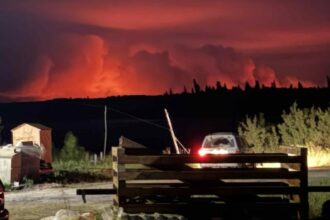The halls of East Kootenay Regional Hospital echo with more than just patient concerns these days. A deepening healthcare staffing crisis has reached critical levels, prompting the BC Nurses Union (BCNU) to sound the alarm during a recent Interior Health board meeting in Cranbrook.
“We’re working in a system that’s held together by overtime and goodwill,” said Adriane Gear, BCNU vice-president, addressing board members with stark statistics that paint a troubling picture across the region. According to Gear, Interior Health currently faces a staggering 26.7% registered nurse vacancy rate, with licensed practical nurse positions not far behind at 20.3%.
The implications of these shortages ripple throughout East Kootenay communities, where healthcare facilities face unprecedented pressure. At East Kootenay Regional Hospital, nursing staff routinely work beyond their scheduled shifts, with overtime hours climbing 31% over the past year alone. Meanwhile, the Elk Valley Hospital in Fernie and Invermere District Hospital struggle with similar challenges, operating with skeleton crews that compromise patient care.
“When nurses are consistently working overtime, exhaustion sets in, mistakes become more likely, and ultimately, patients suffer,” explained Dr. Robert Whitman, a healthcare policy analyst who has studied rural healthcare delivery across Canada. “What we’re seeing in East Kootenay isn’t unique, but it’s particularly severe given the region’s geography and growing population needs.”
The staffing shortfall has created a cascading effect throughout the healthcare system. Wait times for essential services have ballooned, with some non-emergency procedures delayed by months. Emergency rooms occasionally operate at reduced capacity, forcing patients to travel hours for urgent care. Community health programs, vital for preventative medicine, have seen services curtailed as resources are redirected to critical care.
Interior Health representatives acknowledged the challenges during the meeting but pointed to ongoing recruitment efforts and incentive programs designed to attract healthcare professionals to rural communities. “We’ve implemented signing bonuses, relocation assistance, and housing support in hard-to-staff locations,” said Michael Marchbank, Interior Health Board Chair. “But the competition for healthcare talent is fierce nationally and internationally.”
The nursing shortage reflects broader political and economic realities facing healthcare systems across North America. Educational bottlenecks limit the number of new nurses entering the profession, while demographic shifts place increasing demands on services. The COVID-19 pandemic exacerbated these existing problems, with many healthcare workers leaving the profession due to burnout and stress.
For East Kootenay residents like Margaret Clemens, the statistics translate to real-life consequences. “My husband needed cardiac care last month, and we had to be transported to Kelowna because there weren’t enough specialized nurses available locally,” she shared. “That’s a three-hour drive from our home in Cranbrook.”
The BCNU has proposed several solutions, including improved compensation packages, dedicated mental health support for healthcare workers, and expanded nursing education opportunities in rural communities. “We need to stop the exodus of experienced nurses while simultaneously building the next generation,” Gear emphasized.
As Interior Health reviews these proposals, the fundamental question remains: can rural communities like those in East Kootenay sustain quality healthcare without addressing the core staffing issues? With winter approaching and seasonal illnesses expected to further strain the system, the coming months will test the resilience of both healthcare providers and the communities they serve.
How do we balance the immediate crisis of healthcare staffing with the long-term reforms needed to build sustainable rural healthcare systems for future generations?


















